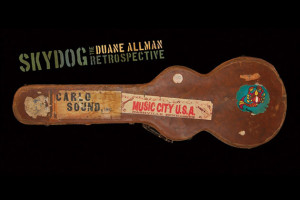 Released this year, Skydog is a sprawling seven-disc set that looks back at the work of Duane Allman, one of the greatest guitarists of all time. Covering everything from the Allman Brothers Band to Derek & The Dominos and Delaney & Bonnie, Skydog is perhaps the most comprehensive reconsideration of the guitar great. Elmore’s Barry Fisch recently got a chance to sit down with Skydog‘s producer, Bill Levenson, who talked about putting the set together, working with Duane’s daughter, and finding out about a different side of a legend.
Released this year, Skydog is a sprawling seven-disc set that looks back at the work of Duane Allman, one of the greatest guitarists of all time. Covering everything from the Allman Brothers Band to Derek & The Dominos and Delaney & Bonnie, Skydog is perhaps the most comprehensive reconsideration of the guitar great. Elmore’s Barry Fisch recently got a chance to sit down with Skydog‘s producer, Bill Levenson, who talked about putting the set together, working with Duane’s daughter, and finding out about a different side of a legend.
Q: Tell me about the origin of this project. How did it come about?
Bill Levenson: Well this project is about twenty years old. I started it along with Kirk West in the mid nineties when we were doing other projects; Live at the Fillmore (Allman Brothers)”, a remix album called “the Fillmore Concerts”, we did remasters and some other projects, and we always thought that the crown jewel would be pulling together a Duane Allman box set. We’d gotten far along on it, spent a good year or two researching, but then it got put on the shelf for a variety of reasons. And it just sat there. For a good fifteen years it just sat up on the shelf.
Q: What was it that gave it the kick it needed to finally materialize?
BL: About two or three years ago I was speaking with Galadrielle Allman, Duane’s daughter, and she told me she was going to start writing a book about her dad. As we talked about it, we both realized that it was an opportune time to revisit the box set, and to time it so that the box and the book would come together simultaneously. That didn’t happen; the target date would have been the 40th anniversary of Duane’s passing which was late 2011, and we both missed that date. But we persevered and got the box out in March 2013; the book will follow soon after. But it was basically the right time to do it, to coincide with the book.
Q: How was it working with Galadrielle?
BL: It was really good. We come from two very different places. By co-producing the set, it broke my pattern; my habits, and I think of her as the heart of the project and me the brawn of the project. It makes for a good balance. By doing it as a collaborative, it forced us both to approach each others way of looking at things, and I think the project reflects that.
Q: There are just so many sessions Duane participated in during those years; how did you come about knowing that he played on all of these sessions?
BL: You know it’s funny. There are probably three stages. The first stage is back in the early seventies when Warner Brothers issued the two anthologies. That was a taster of what was out there. In their day, those were pretty definitive collections. In those days people normally didn’t do box sets, so those two double LP sets hinted at what was available. Then of course working with the catalog twenty five years, you get additional insights. And then, quite honestly, there have been published books. There’s the “Skydog” book which was Randy Poe’s book, and then along comes the internet. You just wonder how we did it without the internet because there’s just so much information out there, and there are so many fabulous sites that have lots of Duane Allman information. So if you take your printed, internet, and vault information and you just follow your nose, you just get a really good education. It didn’t hurt having Galadrielle, and in times past having Kirk West gathering information, so it was a project that in essence had almost twenty years of development.
Q: It’s just so comprehensive and it really seems to cover everything, but I have to ask…was there any material that you could not include because you couldn’t find a useable master, or for legal reasons etc. that you would like to have included?
BL: Well the goal of the set was to be comprehensive and to be cohesive; those are two that don’t always go hand in hand. We wanted the package to seamlessly connect all the dots from ’65 to ’71. A lot of thought went into choosing material that did that, and was also a good listening experience. The goal was to have every CD have an arc, so if you put on a CD it’s like listening to a record; it’s not just like listening to stuff in chronological or alphabetical order. So a lot of decisions in editing; omissions or additions went into balancing the seven discs. There were certain tracks you would have liked to have used but for a few reasons you couldn’t. Two come to mind: Judy Mayhan. She was an Atlantic artist. The only reason we couldn’t utilize her tracks was because they couldn’t find the contract. It wasn’t major enough to hold up the project, but we were just hoping we’d be able to find the contracts and that didn’t happen. There was one Duane Allman solo track, “Steal Away”, which had been prepared back in ’89 for “Dreams” and wasn’t used. It was always being held for something and for legal reasons we couldn’t use it at this point.
Q: Was it an original Duane tune?
BL: Yes, its one of the six or seven recordings from his solo sessions from February of ’69, and just one of those lingering lawsuits that kept it on the shelf. Hopefully another time we’ll get some use out of it. Other than those two tracks I don’t think there are any glaring omissions from my work list. I mean there will be glaring omissions from someone else’s desire list, but its one of those projects you have to sort of make yourself happy and you just can’t possibly appease everybody.
BF: As you mentioned, each CD is an arc. Each CD seems to tell a story. Would you elaborate on each individual disc as to what it covers, or what story you set out for each disc to tell?
BL: The set is roughly chronological. It’s almost completely chronological except for a couple of editorial pieces where a track was moved forward or backward by a few months to tidy up the disc. There’s timing issues and whatever, but even just putting the stuff up chronologically, it told its own story. Disc one opens up in 1965 with the Escorts, and it travels through the formative period of Duane and his brother. You get the Escorts, which is the formative Duane Allman/Gregg Allman band, goes through the Allman Joys, which is interesting because they spend a lot of effort emulating their heroes which appears to be at that time the Yardbirds. You then get the Hourglass, which is their next formative band, their L.A. based band. The disc closes in 1968 with Duane’s first outside session with a band called the Bleus. So you have an arc of formative bands. It fails; none of the bands ever take off, Duane walks, and starts doing sessions. So that’s sort of the story of the first disc. Disc one is Duane as the bandleader in formative bands.
Disc two is practically all soul music. He finds his niche in Fame recording studios, and Muscle Shoals, and does a series of sessions in late ’68: Clarence Carter, Wilson Pickett, Laura Lee, Spencer Wiggins, Arthur Connelly, Aretha Franklin, King Curtis, even does a session for the Soul Survivors, which is all pretty much soul music. It’s a story unto itself. It’s a short period; it goes on from September until January. Then at point he starts a solo career, and that’s where disc three picks up.
Disc three is Duane Allman solo artist. He also at that point is playing with Barry Goldberg, Otis Rush. It’s just at that time Duane also reunites with his brother and starts in March of ’69, the Allman Brothers Band. So you have disc three which is bluesman, and ends with the formative Allman Brothers Band with a Boz Scaggs session thrown in. So disc three is sort of the transition to the Allman Brothers band.
From that point forward, discs four through seven, he alternates between being a solo artist, a bandleader and a session player. These discs aren’t nearly as uniquely programmed as discs one two and three, but for two years it is a balancing act of being both a session player, friend of musicians, and bandleader.
Q: How did you get a hold of some of the unreleased early material, like Escorts or The Allman Joys?
BL: I don’t quite remember the Escorts story because it goes back twenty years, but it was brought to our attention, and at some point it was purchased by Gregg. There are probably seven reels of material. It would be interesting one day to go through it and make it a self standing project, but for now we chose those three tracks that best exemplified what that band sounded like at that time.
Q: Did you find new sources for the previously released Hourglass and other early material and if not, was anything done to the tracks since their release on the Duane anthologies or the “Dreams’ box for this set?
BL: There’s some new Allman Joys material that hasn’t been used before, “Mr. You’re A Better Man Than I”, “Lost Woman”, “Spoonful”, “Gotta Get Away”. Those few tracks that are in common with the “Dreams” box set probably sound very similar. Different mastering engineers may have had a touch different technique but they sound relatively the same.
Q: How did you even find the masters of those obscure single tracks…. Spencer Wiggins, Willie Walker, The Lovelles, The Duck & The Bear, Ella Brown….that must have been difficult to track down.
BL: Well just getting the information took years and years for it to just seep through. Again researching the internet….luckily, I had some conversations with Roger Armstrong at Ace who has a lot of that material in print on CD, and that was real helpful in getting sources to work with. He was pretty instrumental in the beginning in giving me an education on that Muscle Shoals era of Duane Allman.
BF: How did you come to choose which Allman Brothers tracks to use from that catalog?
BL: In stepping back, you have two albums, a live album, the “Eat A Peach” sessions, and live material from the era. So it was important to have material from each of those. I treated them differently; we had a different view. The first Allman Brothers album was a stop everything session. They went in, and they made a record. It was their first statement. We felt that the whole record was iconic enough to sort of find a place in the box set, coupled with the fact I was looking for an excuse to use the original ’69 mixes which don’t get used that often. So between wanting to use the original mixes and feeling it was an iconic album and a pivotal moment in his career, I think it’s the only repertoire we included the whole album as a guide post.
“Idewild South” was a little different; it wasn’t an album session. It was basically made up of four or five different sessions that the band would have in between touring. There wasn’t an opportunity to present it as a cohesive album, so we cherry picked songs, as when they were recorded, but also the songs had to fall on the side of Duane Allman inspired. And then you get the balance…you want to use live material; you have so much real estate to work with. If you’re going to use a live track you don’t use the studio track, so there was a balance between live and studio at that point, so we just cherry picked what material worked well within the set. A lot of times I go back to the fact that the set has to be a good listening experience; there’s some pacing. So you take into consideration the pacing, what’s around it, what were his other activities. A lot of choices were made that way. Unfortunately we did have some restriction; everything is being licensed by Rounder from Universal or the other labels. Unreleased material was hard to justify and hard to do, so I had to work around that. It would have been great to have lots of un-issued material, but I think it would have broken the balance of the set by doing that, and I think that’s a different package. Someday maybe there’ll be a complete live at Fillmore, or there’ll be some other rare concerts, but this wasn’t the vehicle for auditioning those tracks.
Q: Derek & The Dominos was a critical point in Duane’s career. Tell us about these songs and why these specific songs are included.
BL: The album is such a milestone and we’ve all spent so much time revisiting it, it was really hard to decide what to take. I was given the opportunity of licensing five tracks. For me, I always thought “I Am Yours” was one of those under the radar classics and Duane’s playing makes it even better, so that was a priority. “Mean Old World” for the same reason is a priority for me. Then it came down to what’s the best way to represent the record. “Layla” comes to mind of course, so with the other two, what do you do to round that out? You could have gone many different ways; we opted for “Why Does Love Got To Be So Sad” and “Have You Ever Loved A Woman”, which both have dynamic playing by both Eric and Duane. Could have been other tracks. I’m sure everyone’s going to say their favorite track wasn’t represented but these five seem to hold up together pretty well.
Q: How did you find the unreleased Delaney & Bonnie track “Gift of Love”?
BL: The Delaney & Bonnie tracks…we discovered those on the first round back in the nineties. I had good relationships with the folks at Rhino, with Bill Inglot, and I had gotten the opportunity to do some research on Delaney and Bonnie back then. Two things came out of it; discovering the WPLJ tapes and realizing there were outtakes from “Motel Shot”. Listening to “Gift of Love” right away I knew that was a keeper and for me that was the heart of the project at that time almost to the degree where that was going to be the name of the record; the working title was “Gift of Love”. The WPLJ is just an amazing piece of tape. That ten or twelve minutes of the acoustic medley is just unbelievably inspiring.
Q: You mention the WPLJ material….do you know the history of the source of that material, the Delaney & Bonnie and the Allman Brothers? Obviously they were radio shows that were broadcast and have been floating around on bootlegs for decades, but they never sounded THIS good! I know you used some of that on the “Dreams” box as well.
BL: The Delaney & Bonnie were sourced from the multi tracks. Those were new mixes from the multi’s that were on file at Atlantic Records. There’s the full sixty minute concert, it is available, and I think its three reels. There’s one more acoustic track and then the other half of the show was electric. That’s really a show worth revisiting one day. At the same time we discovered the Delaney & Bonnie we discovered the WPLJ Allman Brothers tapes too, which are now on file. I think you will probably see an official release from the Allman Brothers camp in the near future. Both shows happened within a month of each other. I think one was in July and one was in August of ’71. Both artists were at the peak of their powers.
Q: Both a studio and live version of “Blue Sky”, very close to each other. Why did you feel both versions were necessary?
BL: Both happened very late in Duane’s career, and you’re trying to bring the set to a close in some poignant fashion. Of course you always have “Little Martha” as an end point, but I just thought it was apropos to show the band on stage and in the studio using that one song as a way of showing where they had progressed to and what the promise was at that time. It’s as much about poetry as it was about programming.
Q: And “Blue Sky” was only performed a handful of times I would guess, because of the timing of it.
BL: Most likely. I think they started working on it August of ’71, I think the Stonybrook was in September, so you’re talking everything happening within a month or two.
Q: After taking so long to bring this project to fruition, how happy are you with the result?
BL: What we discovered was by doing the box set twice, it benefited from starting it and restarting it. I think when you think about something that long you sort of have a much better perspective than if you’re rushing for a deadline to get it done. So we had the benefit of fifteen years to just dwell on it, also to absorb new information. When we started the project for the second time two or three years ago I had pulled out the five or six discs worth of material we had compiled, and it was programmed, and it was sequenced, it was almost ready….and it wasn’t enjoyable. That’s when I realized that it needed some trimming, it needed some expanding, and it needed remodeling. It was those fifteen years that allowed both Galadrielle and I to revisit it and just make a better version of it. It made a big difference. And the beauty is it wasn’t on deadline; it was going to be ready when it was going to be ready, and we felt we did that.


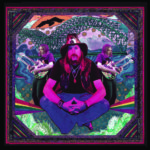
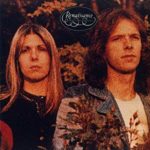
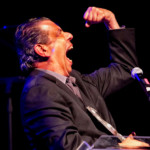
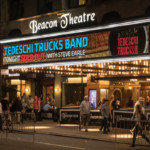

Be the first to comment!